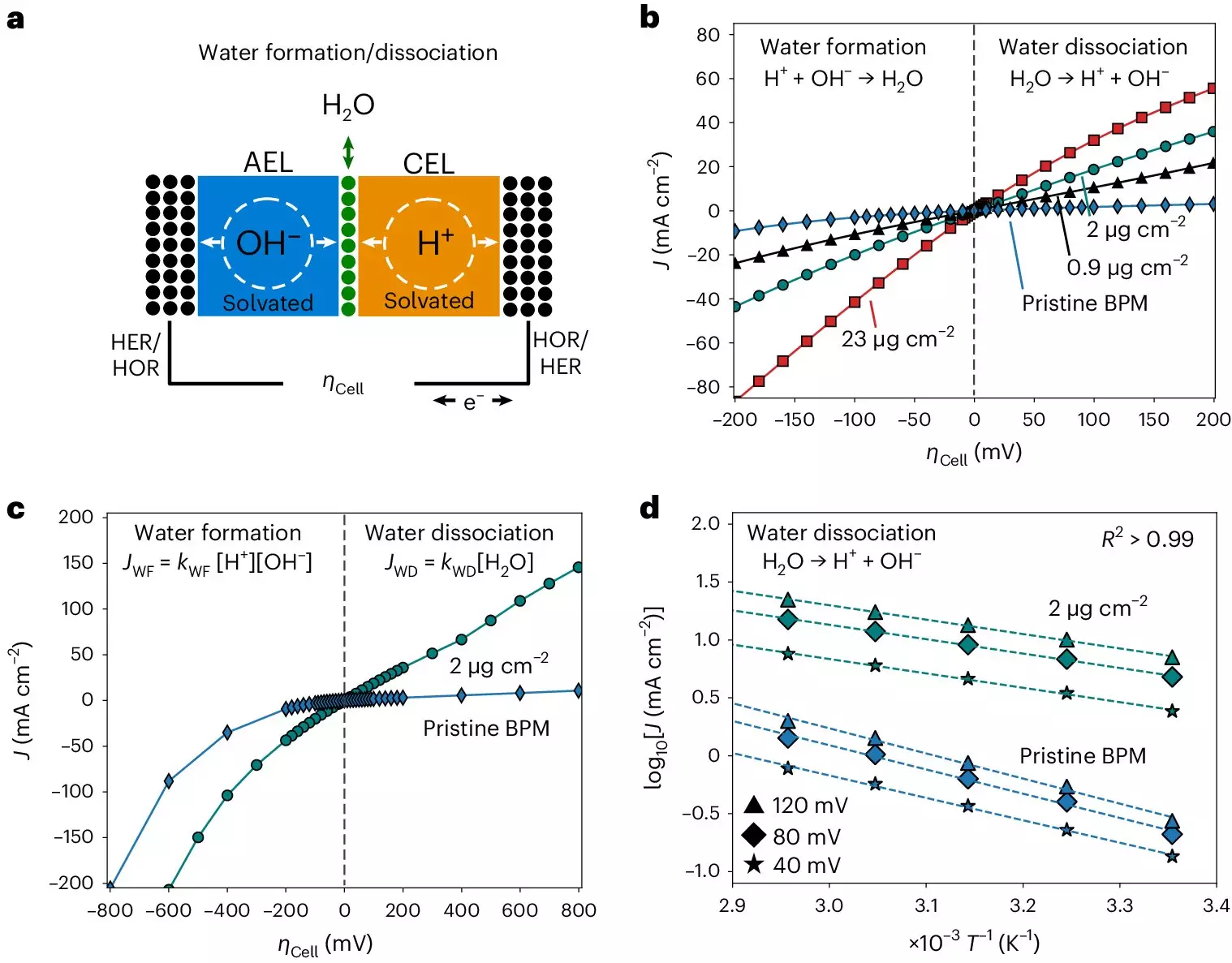Bipolar membranes are a key component in various energy technologies, such as electrolyzers and hydrogen fuel cells. These membranes consist of two oppositely charged layers, the cation-exchange and anion-exchange layer, which are essential for their function. Despite the usage of bipolar membranes in energy applications, there is still much to be understood about their working principles and ion solvation kinetics.
A recent study by researchers at the Fritz-Haber Institute of the Max Planck Society delved into the water dissociation and ion solvation kinetics at the interface of bipolar membranes. Their research, published in Nature Energy, offered new insights into the design and fabrication of these membranes, as well as potential advancements in electrocatalysts for fuel cells. The study aimed to bridge the gap between the understanding of bipolar membranes and the broader field of electrochemistry.
The study faced various experimental challenges, such as setting up a system to study the kinetics of bipolar membranes without interference from electrolyte ions. The researchers were able to observe bias-dependent relationships between activation entropy and enthalpy, as well as characteristics of solvation kinetics unrelated to the catalysts’ composition. These findings could lead to improved bipolar membranes for various applications, including electrodialysis and CO2 electrolyzers.
The research from the Interface Science Department at the Fritz Haber Institute sheds light on the importance of entropic changes at liquid-solid interfaces in designing new electrocatalysts for specific chemical reactions. The study also opens up new possibilities for utilizing bipolar membranes in different fuel cells and electrodialysis systems. While the study has provided valuable insights, there are still fundamental questions to be addressed, such as the water formation reaction in bipolar membranes and exploring collaborations for different applications. Overall, the research aims to pave the way for advancements in energy technologies utilizing bipolar membranes.
The study on bipolar membranes offers a deeper understanding of their working principles and potential applications in energy technologies. By unraveling the ion solvation kinetics and activation enthalpy relationships, researchers pave the way for the development of better performing membranes and electrocatalysts. The findings could lead to significant advancements in the field of energy production and storage, making bipolar membranes a crucial component in future sustainable technologies.


Leave a Reply